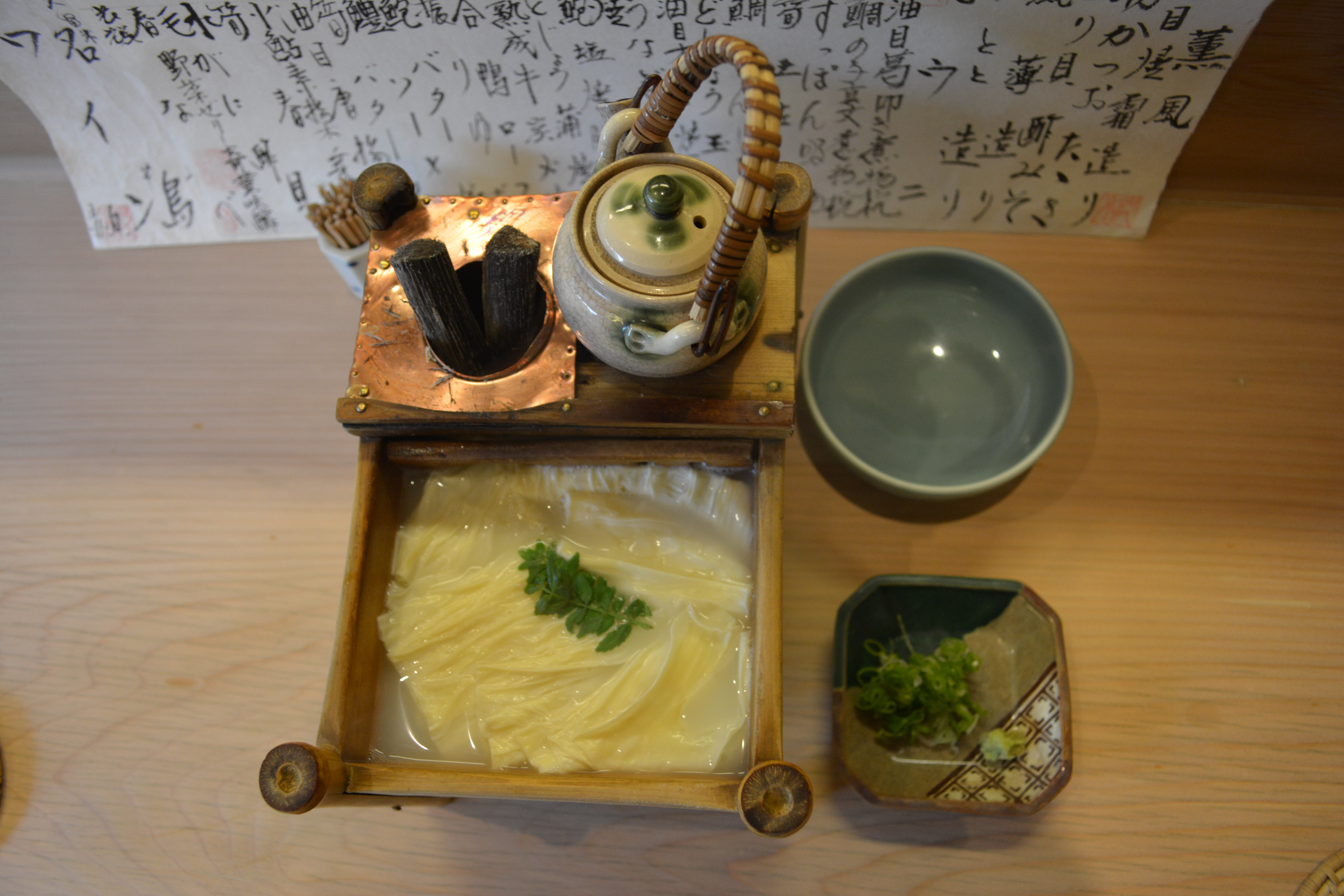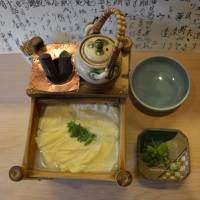There's every chance that while dining at Sakamoto you'll end up in a tourist's photo. It's not because of who you are, but where you are. Diners sit overlooking the shallow Shirakawa River, which is lined with restaurants, bars and cafes on one side, and a cobbled street with cherry trees and willows on the other, the tips of their branches fanning the water as it dances through the Gion district.
It's a location that quietly screams, "This could only be Kyoto" — hence the tourists and their cameras.
Sakamoto is located down a dark, narrow alley on the southern side of the river. Once inside, the natural light pouring in through the trees illuminates this small kappo (counter style) restaurant. It might all be too cliched, if you weren't perched above a canal in old Kyoto.
It also helps that chef Ryuta Sakamoto and his team serve beautiful food with a minimal amount of fuss. What separates a good restaurant from the milieu of forgettable ones? It's the details.
Take the second dish in this seven-course lunch, which was painted with green hues: two fillets of sayori, needle-like white fish with slender beaks, were coated on one side with aonori (green laver) adding a deep flavor to this delicate swimmer. The sayori rested against a bamboo leaf artfully tied up to conceal a delightful parcel: sweetened prawn and mashed satoimo (taro root) lightly favored with vinegar. Emerald fava beans were also added to the presentation. Too much green? Not when it was put together like this.
Two meat dishes — in the broadest sense — followed: sashimi of squid and tuna seared tataki-style, a well-thought out contrast with the squid that dissolved much like sugar dissolves in water. The beef dish was a surprise because it's not often seen in kaiseki (traditional multicourse) cooking. It's a pity because here the beef slices were given a quick searing and served with avocado and a honey-mustard relish — a simple and welcome reprieve from the dogma of kaiseki.
The showstopper, however, was the yuba (bean curd skin), which had to be lugged on stage. A young chef strained as he leaned over the counter to put down a wooden cooker — for want of a better word — that had a small furnace to cook the yuba and to keep the pot of dashi hot. Next time someone offers to treat you to anything, head to Sakamoto for the Tenshin lunch — the yuba alone makes it worthwhile.
The only sour note: midway through the meal, a diner at the other end of the short counter lit up a cigarette. In an instant the atmosphere of the restaurant changed. Not that anyone complained, but the aroma from the kitchen was overpowered by the coarseness of the tobacco. It was the only time during an otherwise beautiful meal that I wished I was on the outside looking in.


















With your current subscription plan you can comment on stories. However, before writing your first comment, please create a display name in the Profile section of your subscriber account page.